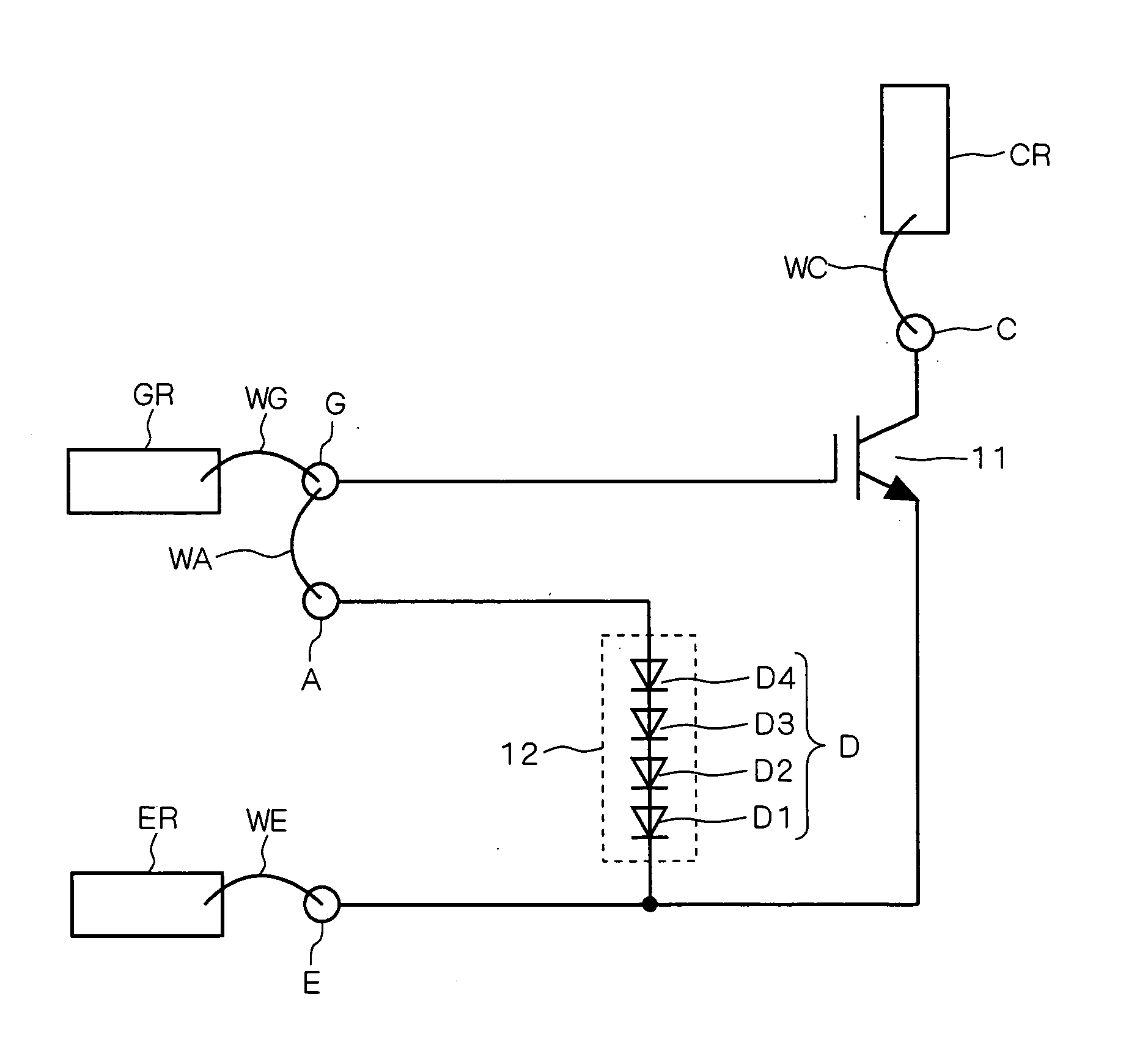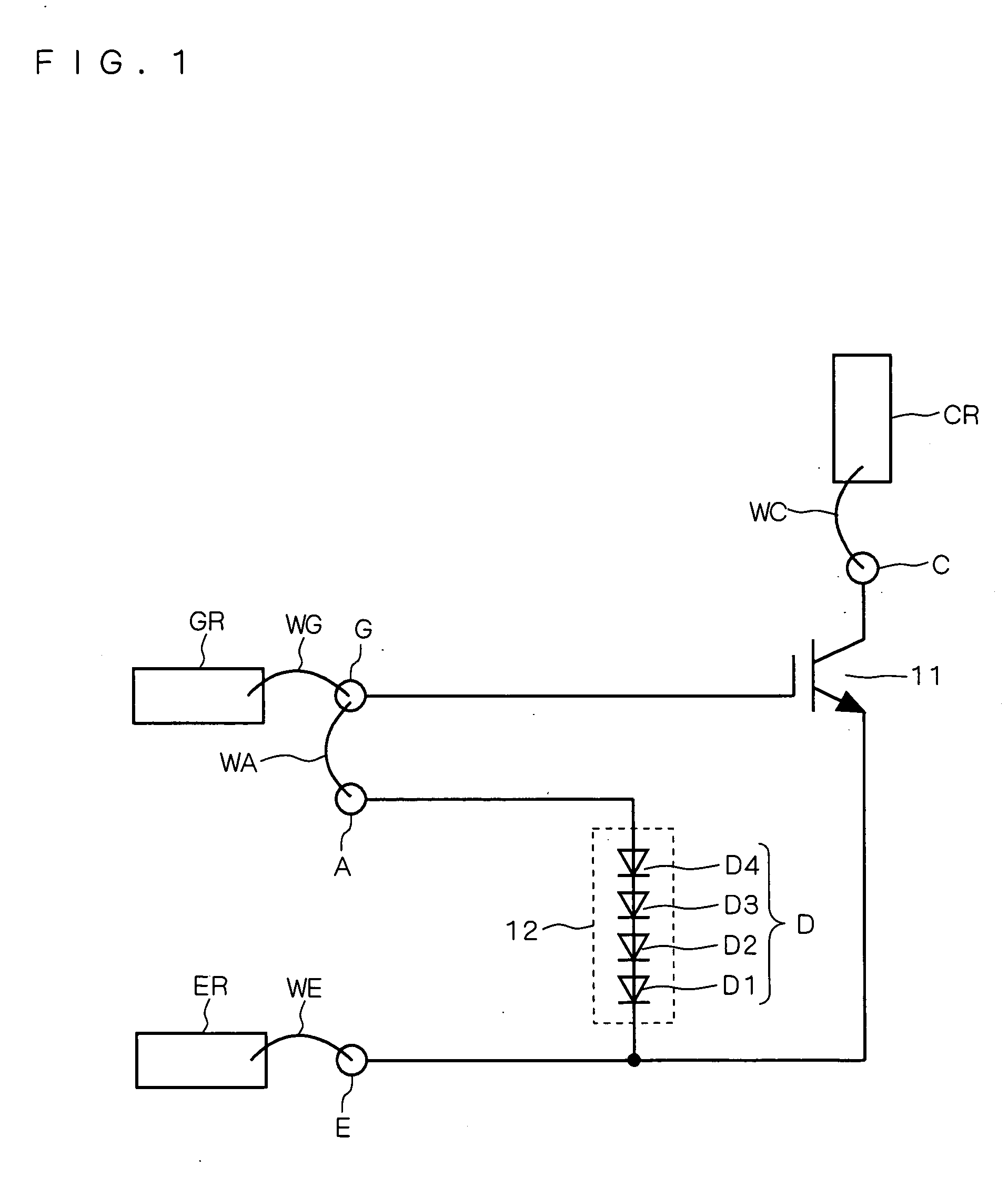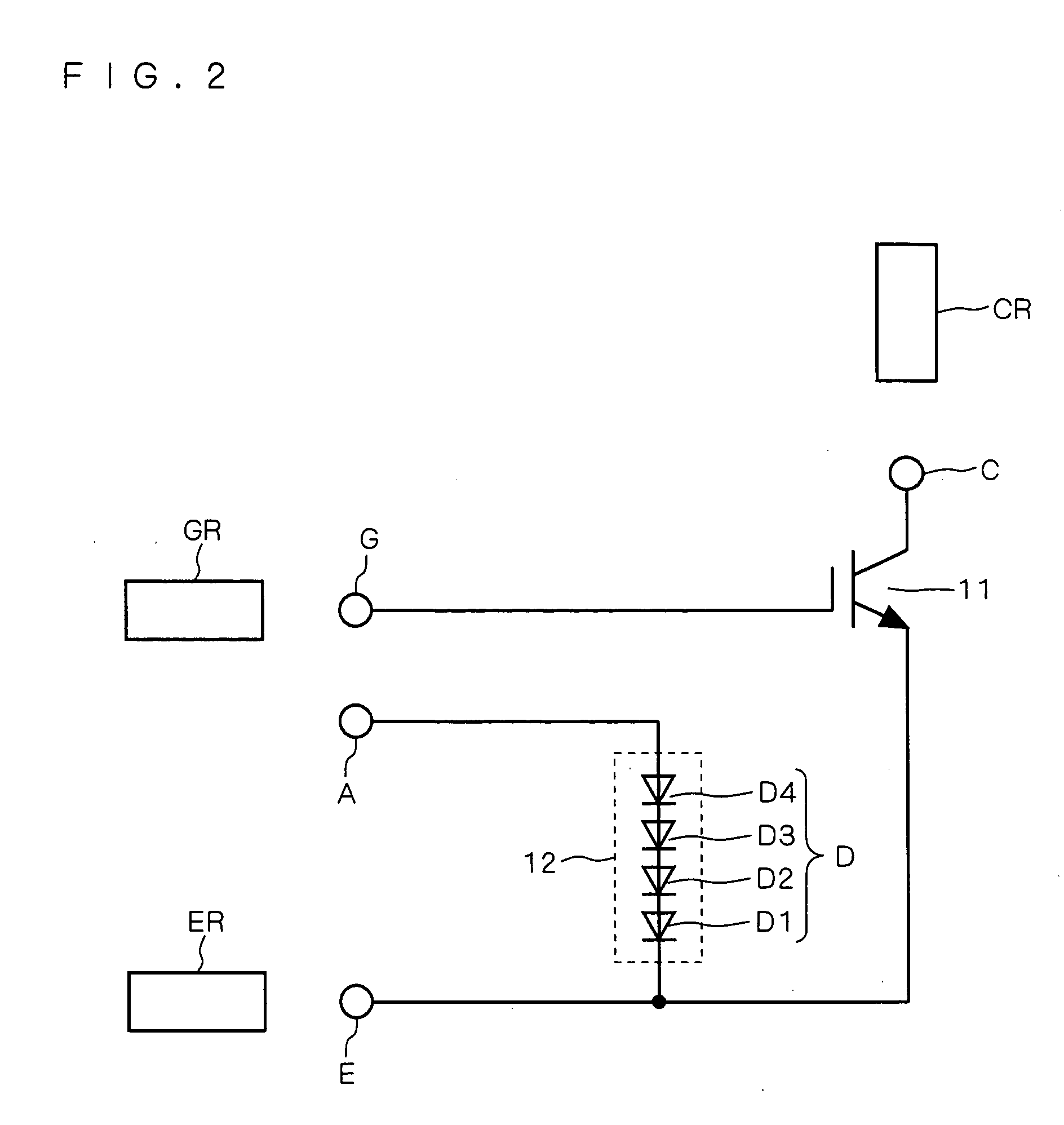Semiconductor device and method of manufacturing thereof
a technology of semiconductor devices and insulating films, which is applied in the direction of individual semiconductor device testing, pulse technique, emergency protective arrangements for limiting excess voltage/current, etc., can solve the problems of gate insulating film breakdown, high probability of igbt breakdown, and high short-circuit current, so as to eliminate defective elements and enhance reliability of igbt
- Summary
- Abstract
- Description
- Claims
- Application Information
AI Technical Summary
Benefits of technology
Problems solved by technology
Method used
Image
Examples
first preferred embodiment
[0016]FIG. 1 shows a semiconductor device according to a first preferred embodiment of the present invention that comprises an IGBT 11 as an exemplary insulated gate semiconductor device. The IGBT 11 and a clamping element 12 are formed on the same semiconductor chip (hereinafter simply referred to as a chip).
[0017] External electrodes GR, CR and ER are wire bonded to a gate terminal (first terminal) G, to a collector terminal C, and to an emitter terminal E formed on the chip, respectively. More particularly, the external electrode GR is connected to the gate terminal G through a bonding wire WG. The external electrode CR is connected to the collector terminal C through a bonding wire WC. The external electrode ER is connected to the emitter terminal E through a bonding wire WE. The IGBT 11 has a gate (control electrode) connected to the gate terminal G, an emitter (first current electrode) connected to the emitter terminal E, and a collector (second current electrode) connected t...
second preferred embodiment
[0029]FIG. 3 shows a semiconductor device according to a second preferred embodiment of the present invention. Those elements corresponding to the components of FIG. 1 are identified with the same reference numerals, and the description thereof will be omitted. The second preferred embodiment comprises a clamping element 31 which characteristically includes a diode DR in addition to the diode D.
[0030] The diode DR has one end connected to the anode terminal A. Another end of the diode DR is connected to the emitter. That is, the diode DR is connected between the anode terminal A and the emitter in inverse-parallel connection to the diode D. The diode DR includes a plurality of diodes connected. In FIG. 3, four diodes including DR1 through DR4 that constitute the diode DR are connected in series anode-to-cathode. The cathode of the diode DR1 is connected to the anode terminal A. The anode of the diode DR4 is connected to the emitter of the IGBT 11. Like in the first preferred embodi...
third preferred embodiment
[0037]FIG. 5 shows a semiconductor device according to a third preferred embodiment of the present invention. Those elements corresponding to the components of FIG. 1 are identified with the same reference numerals, and the description thereof will be omitted. The third preferred embodiment comprises a clamping element 61 having one end connected to the gate, and another end connected to one end of a resistor R2. The resistor R2 has another end connected to the emitter. The clamping element 61 characteristically includes a sensing terminal S. A gate drive circuit 52 is connected through an external electrode not shown to the gate terminal G. The gate drive circuit 52 serves to apply a gate voltage to the gate to actuate the IGBT 11. The sensing terminal S is connected through an external sensing terminal not shown to the gate drive circuit 52.
[0038] The clamping element 61 comprises the diodes D and DR. The diode D includes a plurality of diodes connected. In FIG. 5, four diodes in...
PUM
 Login to View More
Login to View More Abstract
Description
Claims
Application Information
 Login to View More
Login to View More - R&D
- Intellectual Property
- Life Sciences
- Materials
- Tech Scout
- Unparalleled Data Quality
- Higher Quality Content
- 60% Fewer Hallucinations
Browse by: Latest US Patents, China's latest patents, Technical Efficacy Thesaurus, Application Domain, Technology Topic, Popular Technical Reports.
© 2025 PatSnap. All rights reserved.Legal|Privacy policy|Modern Slavery Act Transparency Statement|Sitemap|About US| Contact US: help@patsnap.com



